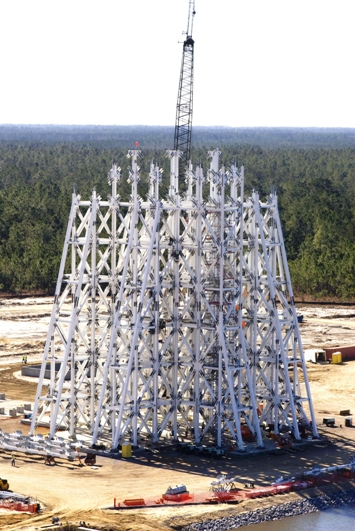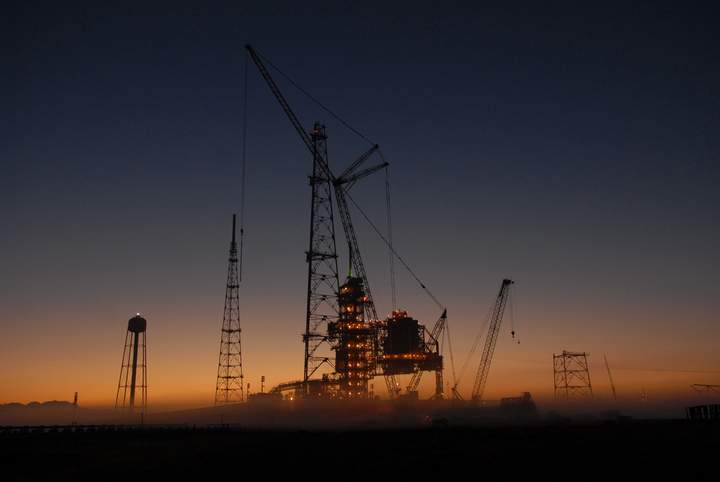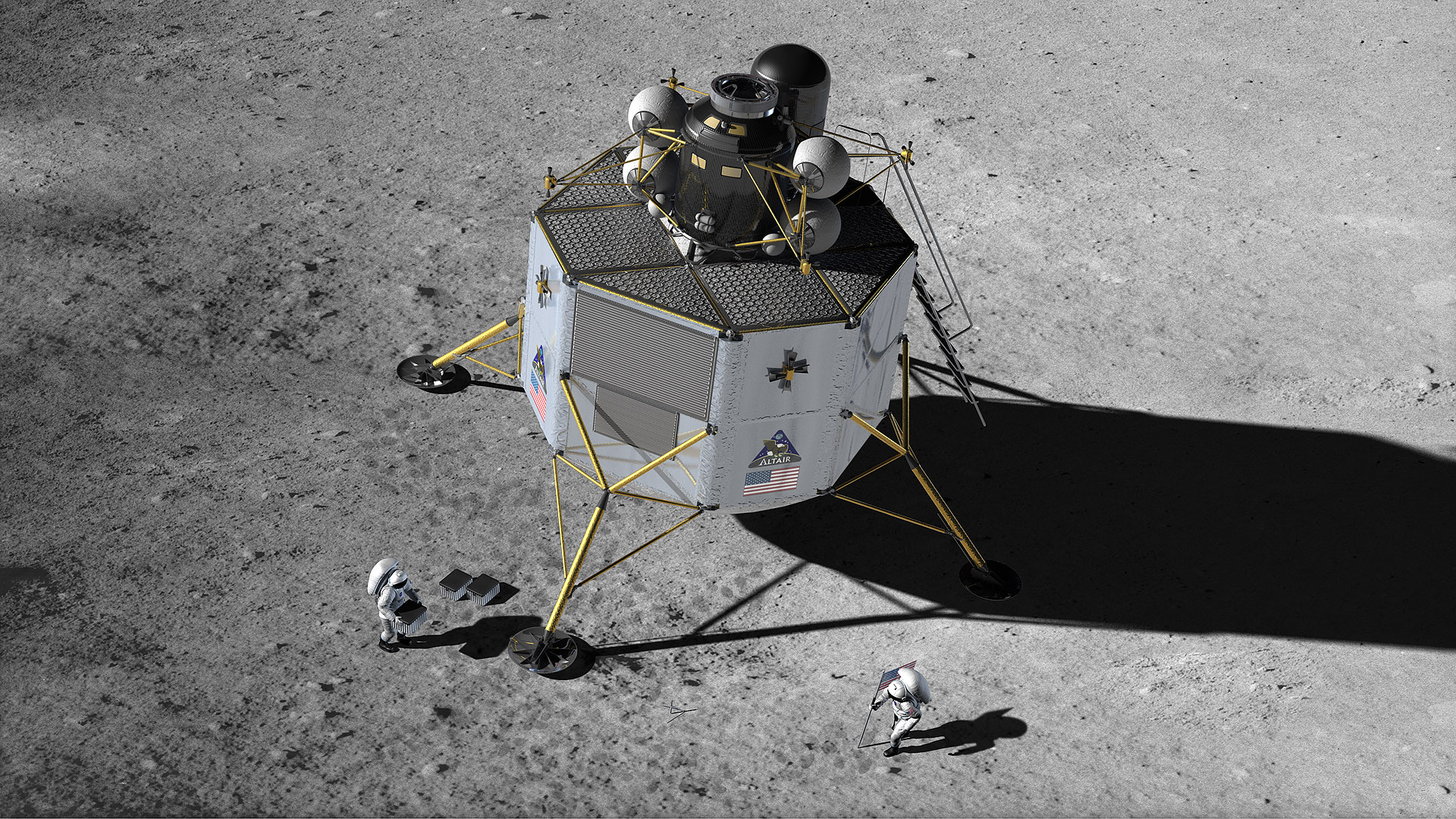A lot of people have asked what it means to “human rate” a rocket — to put people on top of a rocket and send them into space. How does an agency like NASA take on this challenge? And what considerations do engineers give human rating as they design Ares to deliver astronauts to the International Space Station by 2015 and for future trips to the moon and beyond?
In a nutshell, human-rating a rocket means that we take our understanding of how the rocket can fail to a higher level of fidelity (than for a non-human rated rocket), and then take steps to prevent failures or have it fail in such a way that the crew can survive the failure (e.g. crew abort).
For NASA, the Ares I rocket is being designed from the outset to fly humans as its primary role vs. modifying an existing system.
To get a little deeper into the subject, I talked with some senior NASA Marshall Space Flight Center engineers, Neil Otte and Gary Langford, who work this challenge for NASA and here’s how they explain it:
Let’s clearly define some of the primary human rated attributes and what they mean. First, human safety is the measure of risk of injury, or loss of life, to any spaceflight personnel. NASA’s policy is to protect the health and safety of humans involved in or exposed to space activities, specifically the public, crew, passengers, and ground personnel. Specifically human rating is involved with the risk to the flight crew. Risks to ground crew and the public are covered under other NASA policy directives and are inherent in all missions regardless of the presence of a flight crew.
A human-rated system accommodates human needs, effectively utilizes human capabilities, controls hazards and manages safety risks associated with human spaceflight, and provides, to the maximum extent practical, the capability to safely recover the crew from hazardous situations. This statement makes up the basic three tenets of human rating: assuring the total system can safely conduct the mission, incorporate design features that accommodate human interaction with the system, and incorporate design features and capabilities to enable safe recovery of the crew from hazardous situations.
Simply put, human rating is a thorough process that consists of many variables being taken into account to safely design, build and launch a crewed spacecraft and return that spacecraft, and its crew safely to the earth. The process begins at program inception and continues throughout the life cycle of the program and includes: design and development; test and verification; program management and control; flight readiness certification; mission operations; sustaining engineering; maintenance, upgrades, and disposal.
We can now look closer at human rating. The first tenet is to safely conduct the planned mission. To accomplish this requires a very careful design. This design is accomplished by a careful examination of the hazards and design features that prevent the hazard known as hazard controls. In the design, the first step would be to try eliminating the hazard; if that is not possible then hazard controls can be put into place to prevent the occurrence of the hazard. Hazard controls can take many forms such as failure tolerance by incorporating redundant or backup systems and components, application of system margins to assure function of the system even under the most extreme conditions, and quality assurance from early material and component selection through final assembly and checkout operations. If applied to a simple example of say a home heating system, the hazard would be that the house is too cold for the health and safety of the occupants. Moving to a warmer climate, however, could eliminate the hazard, if not possible then hazard controls are put into place. Use of redundant systems or components can be applied. For example, many heat pump systems have backup electrical or gas systems to provide heat in the event of a compressor failure or the inability of the compressor to meet the needed heat requirements. The system is carefully sized to provide adequate heat under the most extreme expected winter temperatures for the local climate, and the equipment manufacturer and the installation contractor control quality.
For the Ares I rocket the foundations of the first basic tenet in developing a human rated system have been carefully laid out. Factors such as hazard elimination and hazard controls have been carefully thought out and placed as requirements in the system design. In addition, program management and control places additional requirements on the development to assure adequate system margins, proper test and verification, and safety and mission assurance practices to further minimize the risk to the flight crew.
Even with all the care that goes into the system design and development, the system design must accommodate failure. Sometimes failure is dealt with by simple redundancy that allows mission continuation. In some cases, however, mission continuation is no longer possible and steps must be taken to safely return the crew. For the example of the house, for extreme cold and total system failure, the occupants could choose to leave, go stay with family or friends, or stay in a hotel until repairs are made. In short you remove the humans from the hazard. Ares accomplishes this by incorporation of the launch abort system (LAS). The LAS allows the spacecraft to be lifted away from a failing launch vehicle and allows for spacecraft reentry and rescue of the crew by search and rescue forces.
Launch of a crew to low earth orbit is an energetic process that inherently has significant associated risk. The process of human rating attempts to eliminate hazards, control the hazards that remain, and provide for crew survival even in the presence of failures that expose the crew to the hazards. The Ares Projects team was assigned the task of designing a launch vehicle capable of carrying the Orion crew exploration vehicle, with a crew of four to six astronauts, to the International Space Station AND later support lunar missions. NASA’s top priority is to design and build a vehicle that supports the crew with the safest design possible given real external constraints. The Ares design is a culmination of years of studying the best attributes for a human rated launch system. Every aspect of human rating has been taken into account in the Ares design, therefore the Ares I rocket will be fully human rated, something only achieved by a small fraction of launch vehicles.
The Ares I rocket is three years into its development process and has successfully passed every major design review. Ares is being designed with human rating in mind as the primary requirement vs. modifying an existing rocket. Human rating has been an integral part of the Ares I development since day one.




